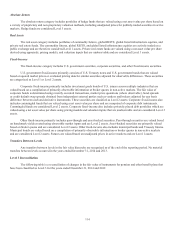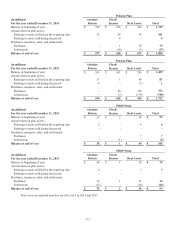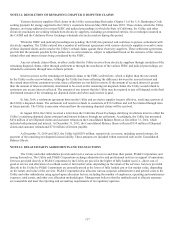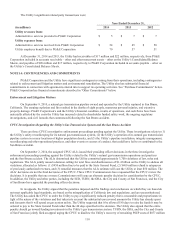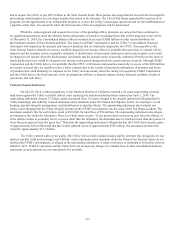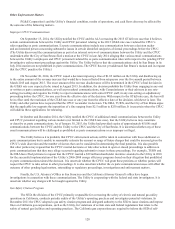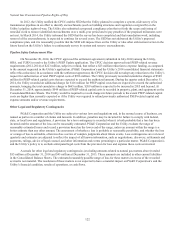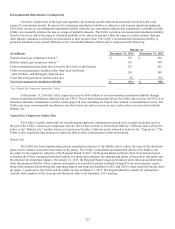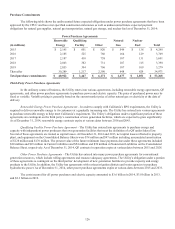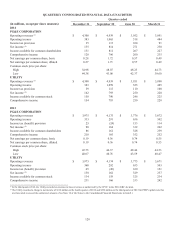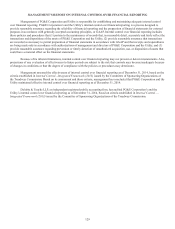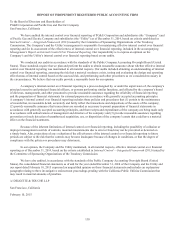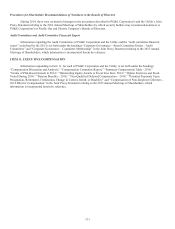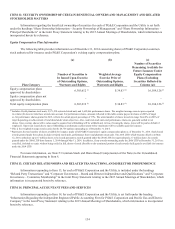PG&E 2014 Annual Report Download - page 132
Download and view the complete annual report
Please find page 132 of the 2014 PG&E annual report below. You can navigate through the pages in the report by either clicking on the pages listed below, or by using the keyword search tool below to find specific information within the annual report.124
The Utility’s environmental remediation liability at December 31, 2014 reflects the Utility’s best estimate of probable
future costs associated with its final remediation plan and interim remediation measures. Future costs will depend on many
factors, including the levels of hexavalent chromium the Utility is required to use as the standard for remediation, the required
time period by which those standards must be met, and the nature and extent of the chromium contamination. As the comment
process continues and the final order and permits are issued, the Utility expects to obtain additional information about the total
costs associated with implementing the final remedy and performing related activities and the best estimate of future costs may
be subject to further changes. Future changes in cost estimates and the assumptions on which they are based may have a material
impact on future financial condition, results of operations, and cash flows.
Topock Site
The Utility’s remediation and abatement efforts at the Topock site are subject to the regulatory authority of the California
Department of Toxic Substances Control and the U.S. Department of the Interior. In September 2014, the Utility submitted its 90%
remedial design plan to regulatory authorities and expects to submit its final remedial design plan in mid-2015, which would seek
approval to begin construction of an in-situ groundwater treatment system that will convert hexavalent chromium into a non-toxic
and non-soluble form of chromium. The Utility has implemented interim remediation measures, including a system of extraction
wells and a treatment plant designed to prevent movement of the chromium plume toward the Colorado River. The Utility’s
environmental remediation liability at December 31, 2014 reflects its best estimate of probable future costs associated with its final
remediation plan. Future costs will depend on many factors, including the extent of work to be performed to implement the final
groundwater remedy and the Utility’s required time frame for remediation. Future changes in cost estimates and the assumptions
on which they are based may have a material impact on future financial condition and cash flows.
Reasonably Possible Environmental Contingencies
Although the Utility has provided for known environmental obligations that are probable and reasonably estimable, the
Utility’s undiscounted future costs could increase to as much as $1.8 billion (including amounts related to the Hinkley and Topock
sites described above) if the extent of contamination or necessary remediation is greater than anticipated or if the other potentially
responsible parties are not financially able to contribute to these costs. The Utility may incur actual costs in the future that are
materially different than this estimate and such costs could have a material impact on results of operations during the period in
which they are recorded.


